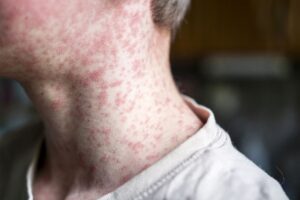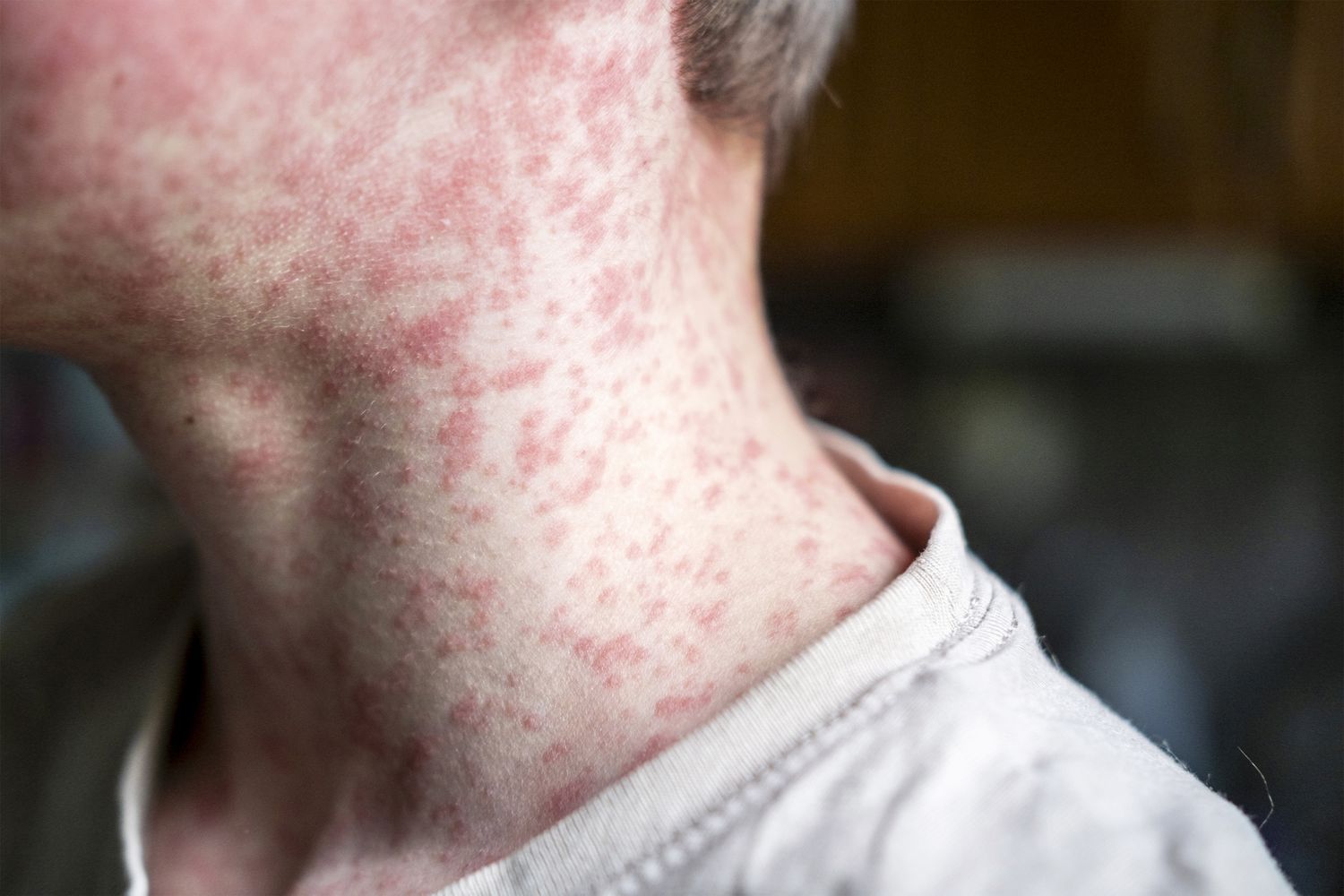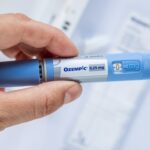The Epstein Barr Virus (EBV) is incredibly common. Most people get infected at some point in their lives, often without even knowing it. For teenagers and young adults, however, EBV infection can lead to infectious mononucleosis, often called “mono” or the “kissing disease.” While fatigue, sore throat, and swollen lymph nodes are classic symptoms, some people also develop an epstein barr virus rash.

This rash can be confusing and sometimes alarming. Understanding why the epstein barr virus rash occurs and what it looks like is crucial for anyone affected. This detailed guide explains everything you need to know about this specific skin manifestation of EBV infection.
Understanding the Epstein Barr Virus
Before diving into the rash, let’s briefly touch upon the Epstein Barr Virus itself. EBV is a member of the herpes virus family. It spreads primarily through bodily fluids, especially saliva, which is why it’s often called the “kissing disease.”
Sharing drinks, food, or utensils can also transmit the virus. Once infected, the virus stays in your body for life, usually in a dormant state. While most initial infections are mild or asymptomatic, some lead to mononucleosis, a more severe illness characterized by significant fatigue, fever, sore throat, and swollen glands, particularly in the neck. Symptoms can last for several weeks, sometimes even months.
Why Does an Epstein Barr Virus Rash Appear?
It’s important to know that a rash isn’t a universal symptom of EBV infection. In fact, only a percentage of people with mono develop a rash. There are two primary scenarios where an epstein barr virus rash might occur:
- Reaction to Antibiotics (Most Common): This is by far the most frequent cause of a rash in someone with EBV. Doctors sometimes mistake a sore throat caused by mono for strep throat and prescribe antibiotics like amoxicillin or ampicillin. For reasons not fully understood, taking amoxicillin or ampicillin while you have an active EBV infection triggers a widespread, distinctive rash in almost everyone with mono who takes these medications. This is a hypersensitivity reaction, not a true antibiotic allergy, though it can look quite dramatic. Other antibiotics, though less commonly, can also potentially cause a similar reaction.
- Directly from the Virus (Less Common): Occasionally, a mild, non-specific rash can develop as a direct symptom of the EBV infection itself, without the use of antibiotics. This is much less common than the antibiotic-induced rash and is often fleeting or less pronounced.
Therefore, if you have mono and develop a rash, the first question usually asked is whether you’ve been taking antibiotics, especially amoxicillin or ampicillin. The link between these specific drugs and an EBV-related rash is very strong.
Recognizing the Epstein Barr Virus Rash
The appearance of the epstein barr virus rash, particularly the antibiotic-induced type, is fairly characteristic. Knowing what to look for can help identify it:
- Timing: The rash usually appears a few days after starting the triggering antibiotic.
- Appearance: It’s typically a widespread, maculopapular rash. This means it consists of flat (macular) red areas mixed with small, raised (papular) bumps. The spots might merge together in some areas.
- Distribution: The rash often starts on the trunk (chest and back) but quickly spreads to the arms, legs, neck, and sometimes the face. It can cover a large portion of the body.
- Color: The spots are usually pink or red.
- Itching: The rash can be quite itchy for some people, though others might experience little to no itching.
- Duration: The rash can last for several days to a week or even longer, even after stopping the antibiotic. It usually fades away gradually.
If the rash is a direct symptom of the virus (less common), it might be less widespread and more subtle, sometimes resembling other viral rashes like those seen in measles or rubella, although EBV rashes are typically not as bright or blotchy.
Symptoms Accompanying the EBV Rash
The presence of an epstein barr virus rash is almost always accompanied by other symptoms of mononucleosis, especially if it’s the more common antibiotic-induced type. These include:
- Severe Fatigue: This is often the most prominent symptom of mono.
- Fever: Elevated body temperature is common.
- Sore Throat: Often severe and prolonged.
- Swollen Lymph Nodes: Commonly felt in the neck, but can also occur in the armpits and groin.
- Swollen Tonsils: Tonsils may become very large and sometimes develop a white or yellowish coating.
- Headache: A frequent symptom.
- Muscle Aches: Generalized body aches.
- Swollen Spleen or Liver: In some cases, the spleen or liver can enlarge, requiring caution with physical activity.
The rash, when present, simply adds another layer to the symptom profile of mononucleosis. It’s crucial to recognize that the rash isn’t the cause of the illness, but rather another manifestation, often triggered by medication used while ill.
Diagnosing EBV and Associated Rash
Diagnosing mononucleosis typically involves a physical examination and blood tests. During the examination, a doctor will check for characteristic signs like swollen lymph nodes, tonsils, and potentially a swollen spleen.
Blood tests help confirm the EBV infection. The monospot test is a common screening test, though it can sometimes give false negatives early in the illness. More specific antibody tests (EBV antibody panel) can detect antibodies the body makes in response to the virus, indicating a recent or past infection.
If a rash is present, the doctor will assess its appearance and distribution. Crucially, they will ask about any medications, particularly antibiotics, taken recently. The combination of typical mono symptoms, a positive EBV test, and the characteristic widespread rash appearing after taking amoxicillin or ampicillin is highly indicative of the antibiotic-induced epstein barr virus rash.
Distinguishing an EBV rash from other types of rashes (like allergic reactions to medications unrelated to EBV, or rashes from other viral infections) is important and done based on the overall clinical picture, including symptoms, medical history, and test results.
Treating the Epstein Barr Virus Rash
The epstein barr virus rash, especially the antibiotic-induced type, generally does not require specific treatment itself. It is a reaction that will typically fade over time as the body recovers from the EBV infection and clears the triggering medication.
The primary focus of treatment is managing the underlying mononucleosis symptoms:
- Rest: Getting plenty of rest is essential for recovery from EBV fatigue.
- Fluids: Staying well-hydrated is important, especially with a sore throat.
- Pain and Fever Relief: Over-the-counter pain relievers like ibuprofen or acetaminophen can help manage fever, headache, and muscle aches. Aspirin should be avoided in children and teenagers due to the risk of Reye’s syndrome.
- Avoiding the Triggering Antibiotic: If the rash was caused by amoxicillin or ampicillin, it is vital to stop taking the medication immediately under a doctor’s guidance. Future use of these specific antibiotics should be avoided. This reaction, while not a classic allergy, means these drugs should not be used in the future.
For the rash itself, if it is particularly itchy or uncomfortable, a doctor might recommend over-the-counter or prescription antihistamines to help relieve the itching. Topical creams are generally not needed unless specifically recommended by a healthcare provider. It’s best to let the rash resolve on its own.
When to Seek Medical Attention
While the epstein barr virus rash is usually harmless, it’s always wise to consult a doctor if you develop a rash while you are sick, especially with symptoms suggestive of mono. A medical professional can correctly diagnose the cause of the rash and the underlying illness.
Seek immediate medical attention if you experience any of the following with the rash:
- Difficulty breathing or wheezing: This could indicate a severe allergic reaction (anaphylaxis), although this is very rare with the EBV antibiotic-induced rash compared to a true allergy.
- Swelling of the face, tongue, or throat: Another sign of a potentially severe reaction.
- Blistering or peeling skin: This could suggest a more serious skin reaction.
- Rash that is extremely painful or looks infected.
- Rash that appears suddenly and spreads very rapidly.
- High fever accompanying the rash.
- Severe abdominal pain, especially on the left side: This could indicate a ruptured spleen, a rare but serious complication of mono.
- Severe headache or stiff neck: Could indicate complications.
In most cases, however, the epstein barr virus rash is simply an expected part of the mono experience when certain antibiotics are involved. A doctor’s visit provides reassurance and ensures proper management of the underlying EBV infection.
Preventing the Spread of EBV
Preventing EBV infection entirely is difficult due to its widespread nature. However, reducing transmission is possible. Since the virus spreads through saliva, avoiding sharing drinks, food, utensils, and personal items like toothbrushes with infected individuals can help. Good hygiene practices, like handwashing, also play a role.
The epstein barr virus rash is a common but often misunderstood symptom associated with infectious mononucleosis. Most frequently triggered by the use of antibiotics like amoxicillin or ampicillin in someone with EBV, the rash is typically a widespread, maculopapular eruption that resolves on its own.
While not usually serious, it’s essential to recognize its link to EBV and avoid the causative antibiotic in the future. If you suspect you have mono and develop a rash, consulting a healthcare professional is always the best course of action. They can confirm the diagnosis, advise on managing symptoms, and ensure you avoid medications that might trigger this specific epstein barr virus rash. Understanding this connection empowers you to navigate EBV infection with greater confidence.








